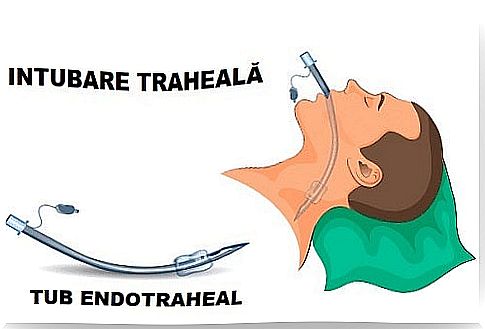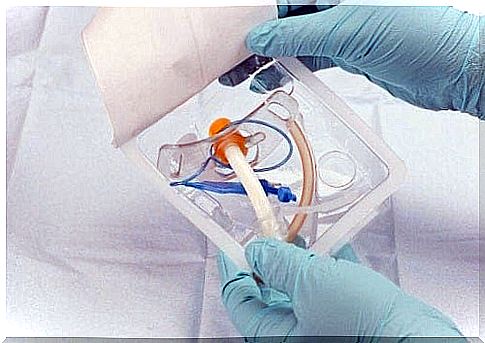Types Of Endotracheal Tubes And Their Uses

Doctors usually insert different types of endotracheal tubes through the mouth or nose. They keep the airways open so that the patient can breathe.
Endotracheal tubes are used under general anesthesia in critically ill patients who need mechanical ventilation due to a problem affecting the airways.
Some studies describe this procedure as “invasive mechanical ventilation”. The basis of this name is the fact that the endotracheal tubes force the airways to open, despite the tension to which they are subjected.
In order for the endotracheal tubes to be inserted, medications are often needed to relax the muscles in the target region. In the following, we will explain how doctors use this type of catheter. At the same time, we will present its composition and some other important aspects.
Endotracheal tube components

Endotracheal tubes – that is, invasive mechanical ventilation systems – have several components. Here are the ones:
- Connector: This component connects the actual tube to the fan. It is practically a buccal device and, unlike the rest of the tube, does not enter the airways.
- Body: It is the main component of the tube and allows the circulation of oxygen. In general, it has a light that helps doctors make sure it inserts the tube correctly through the trachea.
- Tip: It is located at the opposite end of the tube from the connector. Sometimes it has a sharp shape with a hole called the “Murphy hole”. However, not all endotracheal tubes have this characteristic, as they subject the airways to an increased risk of injury.
- Balloon: It is located near the connector and usually has an ergonomic design that allows an insertion as easy as possible. This component of the tube reduces the pressure on the walls of the trachea. Doctors use it especially when they have to intubate a child.
The main types of endotracheal tubes

In addition to the components mentioned in the previous section, it is important to remember which are the different types of endotracheal tubes. The main categories are:
- Single-lumen endotracheal tubes: These are sterile devices made of polyvinyl chloride (PVC) or silicone. Doctors insert them orally or nasally to facilitate anesthesia of the patient. It has a balloon with high volume and low pressure.
- Double lumen endotracheal tubes: They are ideal for patients with asymmetric lung disorders or who have a bronchopleural fistula. They allow the supply of oxygen to a single lung.
- Spatial endotracheal tubes: They can be of several types, including laser-resistant tubes (useful during certain surgeries). The inside of the tube walls is reinforced with spiral wires, which prevents its perforation by the surgical clamps used in cerebral and orofacial interventions.
- Tubes with additional ports: Doctors can use them to administer the medications the patient needs in emergency situations (for example, anesthesia or relaxants).
As you can see, there are several types of endotracheal tubes that can meet the individual needs of patients. However, before using such a device, the specialist must consider some important aspects.
Final aspects
All specialists working in an emergency room need to know how to insert an endotracheal tube correctly. If they do not follow the necessary steps correctly, they risk endangering the lives of patients.
First, these tubes should not be forced into the patient’s neck. If you experience resistance, it is recommended to administer muscle relaxants so that the walls of the trachea are not damaged.
At the same time, the specialists who use this procedure must work with precision and agility. In addition, in order not to waste time, he must be able to immediately realize which type of endotracheal tube is right for the patient.
We hope the information in this article will help you!









